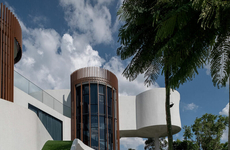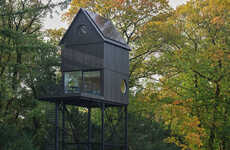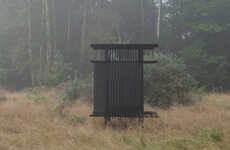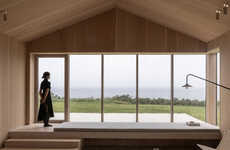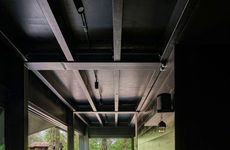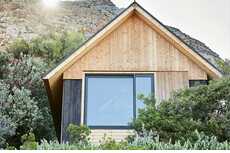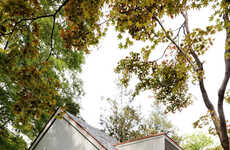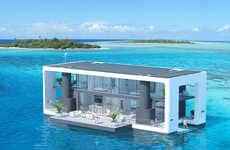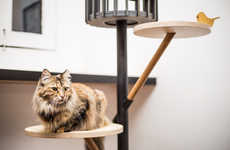
'The Crow's Nest' is a Holiday Home on the South Coast of England
Joey Haar — February 10, 2017 — Art & Design
References: ardesignstudio & archdaily
The Crow's Nest is a holiday home located on the edge of a seaside cliff in the south of England. Though the cottage's angular design is reminiscent of the surrounding area's decidedly rocky appearance (thanks to the cliff's exposure to the elements,) it is covered in a wood facade that serves to soften what might otherwise be a harsh aesthetic.
The Crow's Nest was designed by AR Design Studio, a mid-sized architecture outfit based out of Winchester, England. Many of the firm's other projects also have timber facades and abstract angles. This made the firm the ideal choice for creating the Crow's Nest, as those qualities mesh nicely with the seaside locale.
The interior of the vacation home is pleasingly simple, with a sleek and understated design that complements the look of the house as a whole.
The Crow's Nest was designed by AR Design Studio, a mid-sized architecture outfit based out of Winchester, England. Many of the firm's other projects also have timber facades and abstract angles. This made the firm the ideal choice for creating the Crow's Nest, as those qualities mesh nicely with the seaside locale.
The interior of the vacation home is pleasingly simple, with a sleek and understated design that complements the look of the house as a whole.
Trend Themes
1. Angular Design - Disruptive innovation opportunity: Explore the use of angular design in architecture to create visually striking and unique buildings.
2. Timber Facades - Disruptive innovation opportunity: Develop sustainable and eco-friendly materials for timber facades to meet the growing demand for natural and rustic aesthetics.
3. Understated Interior Design - Disruptive innovation opportunity: Introduce minimalist and streamlined interior design concepts to create calming and harmonious living spaces.
Industry Implications
1. Architecture - Disruptive innovation opportunity: Combine organic and angular architectural designs to redefine traditional building structures and create visually stunning landmarks.
2. Construction - Disruptive innovation opportunity: Explore new construction techniques and materials to create sustainable and energy-efficient buildings with timber facades.
3. Interior Design - Disruptive innovation opportunity: Utilize minimalist and understated design principles to transform interior spaces and enhance overall aesthetic appeal.
5.2
Score
Popularity
Activity
Freshness

